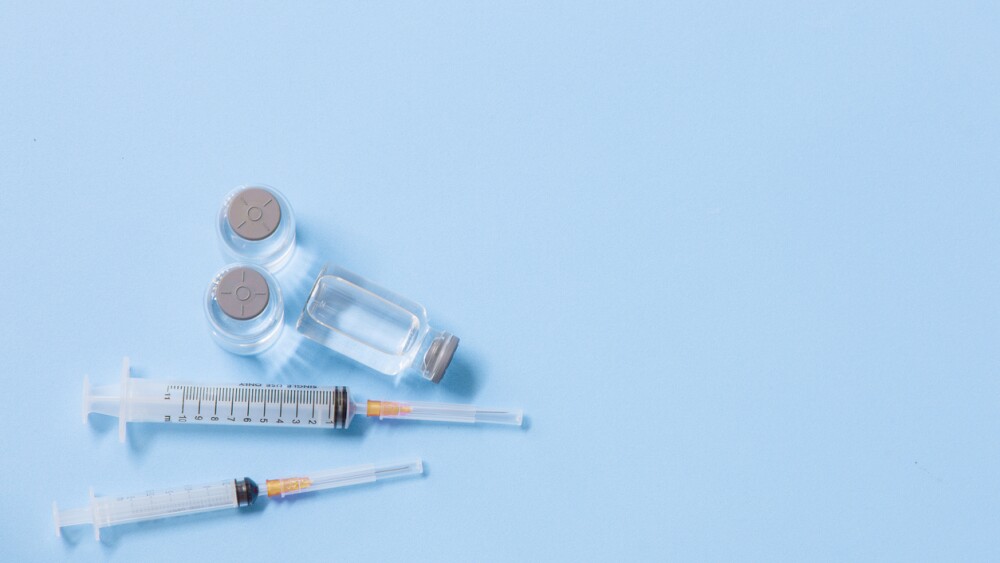TORONTO, March 12 /PRNewswire-FirstCall/ - Vasogen Inc. , a leader in the research and commercial development of technologies targeting the chronic inflammation underlying cardiovascular and neurological disease, today announced the results from the 553-patient phase III SIMPADICO trial of its Celacade(TM) technology (Celacade) in peripheral arterial disease (PAD). While the SIMPADICO study did not reach the primary endpoint of change in maximal treadmill walking distance, Celacade significantly reduced high sensitivity C-reactive protein (hs-CRP), a pre-specified endpoint and a widely recognized marker of systemic inflammation associated with increased cardiovascular risk, including heart failure, stroke, and heart attack.
The results are being presented today at a Late-Breaking Clinical Trial session of the 55th Annual Scientific Session of the American College of Cardiology in Atlanta, by Dr. Jeffrey Olin, Professor of Medicine at the Mount Sinai School of Medicine, Director of Vascular Medicine at The Zena and Michael A. Wiener Cardiovascular Institute in New York, and Principal Investigator and Chairman of the Steering Committee for the SIMPADICO trial.
"We are obviously disappointed that Celacade was not shown to improve walking distance in PAD, one of the most difficult endpoints in which to demonstrate a therapeutic benefit," stated Dr. Olin. "It is very interesting to note, however, the finding of a significant reduction in C-reactive protein, a well recognized inflammatory marker that is associated with increased risk of cardiovascular events. Given this finding, and the fact that otherwise successful therapies have failed to demonstrate a walking distance improvement in PAD, I look forward to the results of the ongoing trial of Celacade in chronic heart failure, where inflammation plays an important role."
Measurement of hs-CRP was included in SIMPADICO as a pre-specified endpoint to assess the impact of Celacade on systemic inflammation. The mean levels of hs-CRP at baseline were well matched at 4.15 mg/L and 4.81 mg/L in the placebo and Celacade groups, respectively, and these levels are consistent with a patient population at moderate-to-high risk for cardiovascular and PAD events. Mean hs-CRP was reduced by 0.93 mg/L in the Celacade group, while it increased by 0.50 mg/L in the placebo group (p(equal sign)0.008, placebo vs. Celacade, baseline to end of study). A majority of patients were on anti- platelet therapy (82.1% placebo, 77.5% Celacade), predominantly aspirin, and were receiving lipid-lowering therapy (81.3% placebo, 79.8% Celacade), predominantly statins, which are known to reduce hs-CRP levels in cardiovascular conditions, providing evidence that Celacade significantly reduces hs-CRP levels on top of anti-inflammatory pharmaceuticals.
"The high sensitivity C-reactive protein results from the SIMPADICO study provide compelling evidence that our Celacade technology produces a significant anti-inflammatory effect," said Dr. Jay Kleiman, Chief Medical Officer and Head of Cardiovascular Development for Vasogen. "Although Celacade did not improve walking distance in this study, the clinically significant reduction of a recognized inflammatory marker that is linked to cardiovascular disease risk has important implications for chronic heart failure and other cardiovascular conditions."
The SIMPADICO study screened 947 patients and randomized 553 subjects. The modified intention-to-treat (mITT) population (n(equal sign)535) that was used for primary data analysis consisted of all patients randomized who received at least one study treatment and had at least one post-randomization treadmill test. The placebo (n(equal sign)273) and Celacade (n(equal sign)262) groups were well balanced for all important baseline characteristics, including demographics, maximal treadmill walking distance (absolute claudication distance, ACD; 321 meters placebo, 303 meters Celacade), smoking history, concomitant medical conditions, and medications.
The percentage increase in ACD between baseline and 26 weeks in the mITT group (the primary endpoint) was not significantly different between Celacade and placebo groups. Similarly, there were no significant differences in the pain-free treadmill walking distance (initial claudication distance, ICD) between the two groups.
The study was also designed to investigate the impact of Celacade on additional pre-specified endpoints, including PAD-related and cardiovascular outcome events. In a time-to-first-event analysis, 84 patients experienced a PAD-related or cardiovascular outcome event during the course of the study, 46 in the placebo group and 38 in the Celacade group. In a similar analysis of only PAD-related outcome events, 20 patients experienced an event, 14 in the placebo group and 6 in the Celacade group. Fifteen of these patients progressed to critical limb ischemia, 12 in the placebo group and 3 in the Celacade group (p(equal sign)0.03).
While changes in quality of life and ankle-brachial index (ABI) did not reach significance in the mITT group, exploratory analysis in the per-protocol group (patients with no major protocol violations and who received a pre-designated number of treatments, n(equal sign)416), showed significant changes in several of these measures. Quality of life analysis (SF-36, v2), showed a significant difference between Celacade and placebo in the Physical Functioning (p(equal sign)0.03) and Social Functioning (p(equal sign)0.05) Scores. On the Walking Impairment Questionnaire (WIQ), Celacade was also associated with significant improvements in the Distance (p(equal sign)0.02) and Speed (p(equal sign)0.03) domains. There was also a small but statistically significant (p(equal sign)0.04) improvement in ABI at 26 weeks in the Celacade group.
Celacade was shown to be well tolerated in this patient population, who were receiving standard-of-care medications for atherosclerosis and PAD, including statins, beta-blockers, anti-platelet agents, and ACE-inhibitors. As previously reported, study treatments were terminated early, based on a recommendation by the study's External Safety and Efficacy Monitoring Committee, due to an absence of a sufficiently strong efficacy signal and an observation of an imbalance in the distribution of malignancy cases. An independent review of these cases was conducted at study end by a recognized expert in medical oncology who was not aware of treatment group allocations (blinded). This review concluded that the number and types of malignancies identified in both study arms were consistent with that expected in the study population (18 expected, 40% lung), which is known to be at higher risk for developing malignancy (91% current or ex-smokers, mean age of 67, and predominantly male). The review also confirmed that, although there was no formal screening at baseline for malignancy, there was evidence that indicates a clear pre-study diagnosis of malignancy in eight cases (1 placebo, 7 Celacade) leaving ten cases (2 placebo, 8 Celacade); a distribution that was not statistically different. Of note, the Data and Safety Monitoring Board for the recently completed ACCLAIM trial of Celacade involving 2,400 patients has conducted regular reviews and has not expressed any concerns regarding safety.
"The ability to impact hs-CRP levels represents an exciting new feature of our technology, and I look forward with increased enthusiasm to the results from our ACCLAIM trial in heart failure, and to exploring new areas in cardiovascular disease," stated David Elsley, President and CEO of Vasogen. "I would like to thank Dr. Jeff Olin and the members of the Steering Committee, the Central Endpoints Committee, the External Safety and Efficacy Monitoring Committee, and the clinical investigators for their considerable efforts in the SIMPADICO program. Most importantly, I thank the patients, without whose dedicated participation in clinical research, no medical advances would be possible."
About Inflammation and C-Reactive Protein
Scientific evidence and findings from both clinical and population studies indicate that chronic inflammation contributes to the development and progression of atherosclerosis, leading to heart attack, stroke, and PAD, and is important in the development and progression of heart failure. C-reactive protein (CRP) is a non-specific acute-phase reactant produced by the liver in response to inflammation and is a valuable marker of cardiovascular risk. Prospective studies have shown high sensitivity CRP (hs-CRP) to be a predictor of increased cardiovascular risk in both men and women and that it may be a better predictor of the risk for heart attacks than cholesterol. Evidence suggests patients with elevated hs-CRP and normal cholesterol levels are at greater risk than those with normal hs-CRP and high cholesterol levels.
Elevated hs-CRP has been linked with risk for first and recurrent coronary events and stroke; chronic heart failure; myocardial infarction or angina in patients with PAD; vascular events after stroke; poor outcome in acute coronary syndromes; restenosis after coronary angioplasty; sudden cardiac death; and hypertension. The predictive value of hs-CRP is independent of other established risk factors, including LDL-cholesterol. Additionally, American Heart Association guidelines assess cardiovascular risk based on hs-CRP levels (mg/L) as: low (hs-CRP less than 1); average (1 less than hs-CRP less than 3); or high (hs-CRP greater than 3).
About Vasogen:
Vasogen is focused on the research and commercial development of technologies targeting the chronic inflammation underlying cardiovascular and neurological disease. The Company's lead product, the Celacade(TM) technology, is currently in the data collection and analysis stage of a pivotal phase III clinical trial in patients with advanced chronic heart failure, designed to support regulatory approval in North America and commercialization in North America and Europe. The 2,400-patient pivotal phase III ACCLAIM trial is a 176-center international study designed to further investigate the use of the Celacade technology to reduce the risk of death and hospitalization in heart failure patients. Vasogen is also developing a new class of drugs for the treatment of neuro-inflammatory disorders. VP025, which has completed phase I clinical development, is the lead product candidate from this new class of drugs.
Certain statements contained in this press release constitute "forward-looking statements" within the meaning of the United States Private Securities Litigation Reform Act of 1995. These statements include, without limitation, statements concerning our strategy, future operations, future financial position, future revenues, projected costs, prospects, plans and objectives of management. In some cases, you can identify forward-looking statements by terminology such as "may", "will", "should", "expects", "plans", "anticipates", "believes", "estimated", "predicts", "potential", "continue", "intends", "could", or the negative of such terms or other comparable terminology. You should not place undue reliance on our forward-looking statements which are subject to a multitude of risks and uncertainties that could cause actual results, future circumstances or events to differ materially from those projected in the forward-looking statements. These risks include, but are not limited to, those associated with the success of our research and development programs, the adequacy, timing and results of our clinical trials, the need for additional capital and the effect of capital market conditions and other factors on capital availability, the potential dilutive effects of any financing, the regulatory approval process, competition, securing and maintaining corporate alliances, market acceptance of our products, the availability of government and insurance reimbursements for our products, the strength of intellectual property, reliance on subcontractors and key personnel, losses due to fluctuations in the U.S.-Canadian exchange rate, and other risks detailed from time to time in our public disclosure documents or other filings with the Canadian and U.S. securities commissions or other securities regulatory bodies. The forward-looking statements are made as of the date hereof, and we disclaim any intention and have no obligation or responsibility, except as required by law, to update or revise any forward-looking statements, whether as a result of new information, future events or otherwise. Numerical values indicating the statistical significance ("p-values") of results included in this press release are based on analyses that do not account for endpoint multiplicity, and therefore are for information only and are not intended to be used for any future regulatory submissions or in any future product labeling in jurisdictions where such uses are prohibited.
Vasogen Inc.CONTACT: Contact: Glenn Neumann, Investor Relations, 2505 Meadowvale Blvd,Mississauga, ON, Canada, L5N 5S2, tel: (905) 817-2004, fax: (905) 569-9231,www.vasogen.com, investor@vasogen.com; For Media: Dan Budwick, BMCCommunications, Ph: (212) 477-9007 x14, daniel@bmccommunications.com




